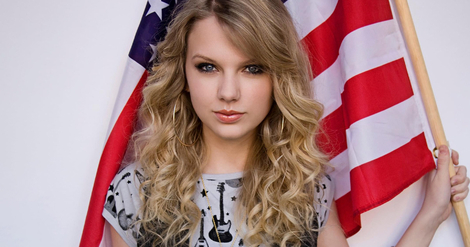It’s hard to recall a time when the singer wasn’t topping charts and bringing home Grammys. But her success was far from a sure bet
As someone who wrote a book about Taylor Swift, I’ve heard my fair share of strong opinions about why she hit it big. Wealthy parents. Classic American-girl looks. A guitar and a diary full of boy trouble. Of course she made it—right?
These factors may have given Swift a head start, but they didn’t guarantee anything. Not even close. There are plenty of girls with rich dads and vocal chops who could tell you that. The music industry is fickle and brutish, and success hinges as much on timing, connections, and dumb luck as it does on talent. There’s no clear formula for a breakthrough—let alone a career that endures.
And Swift was trying to do something that hadn’t really been done before, at least the way she had envisioned it: A teenage girl writing and performing her own songs for other teenage girls. And in country music, of all genres—one that tends to hold on to its norms and traditions like a pissed-off toddler clings to his iPad at bedtime.
Aside from LeAnn Rimes, who released her highly successful debut album, Blue, at 13, teenagers had struggled to take hold. This was partly an audience problem. Reflecting on her initial efforts to secure a record deal, Swift recalled to NPR, “[Something that was] said to me early on was ‘Teenagers don’t listen to country music. That’s not the audience. The audience is a 35-year-old housewife…. How are you going to relate to those women when you’re 16 years old?’… And I kept thinking, ‘But I love country music, and I’m a teenager!’ There have to be more kids out there like me.”
She was right. But at the time it was a hard sell.
After a female renaissance in the 1990s—thanks to Faith Hill, Shania Twain, and the Chicks, all artists Swift idolized—the genre drifted back toward a male-dominated mainstream, according to journalist Marissa R. Moss in her book Her Country. The consolidation of radio markets meant that a handful of national companies controlled most local stations. Programming decisions became increasingly data-driven and centralized, leading to playlists dominated by male artists in Stetsons and trucker caps.
Swift was writing songs for an audience that, on paper, didn’t exist. This wasn’t pop, where former Mouseketeers such as Britney Spears and Justin Timberlake had already laid the groundwork for teen stardom. Country music tended to skew older and more conservative. Industry insiders doubted whether anyone would care about a 16-year-old girl’s musings about boys and breakups.
Spoiler alert: the suits were wrong. And the teenager was right.
Swift didn’t just find success in country music—she conquered it. How? She and Scott Borchetta, head of her label Big Machine, followed a playbook familiar to entrepreneurs: they spotted an overlooked audience and moved aggressively into uncharted territory. They weren’t trying to beat the competition—they were creating a new lane altogether.
Marvel Comics did something similar in the 1960s. At the time, DC Comics was cranking out mythical heroes aimed at children. But DC’s storylines had grown stale. So Marvel editor in chief Stan Lee, along with artists Jack Kirby and Steve Ditko, created more human, flawed superheroes—the Fantastic Four, Hulk, Iron Man, Black Panther—and began marketing them to college students, an audience the industry had mostly ignored.
Marvel’s strategy had two key moves: First, they targeted non-customers—young adults who had aged out of comics but might be pulled back in by more complex storytelling. Second, they made content that spoke directly to that audience’s reality: messy emotions, social anxieties, moral ambiguity. By 1967, Marvel was selling six million comic books a month.
Swift and Borchetta’s strategy echoed that approach. They went after non-customers—teens that country radio had written off—and created content that was emotionally specific, musically relatable, and, most importantly, authentic. These weren’t Nashville-vetted narratives filtered through veteran songwriters. They were her stories, her voice.
Being an underdog had its advantages. Swift and Borchetta were open, willing, even eager to try new ways to make, distribute, and market hits. While others saw deeply risky challenges, Swift and Borchetta saw unfettered opportunities. And they had the sense of urgency to seize them. As Borchetta told Billboard magazine, “We knew we had to strike quickly and aggressively and go for the brass ring.”
Between 2006 and 2010, as Swift’s debut and sophomore albums climbed the charts, country radio experienced a rare surge in younger-female listenership; by 2009, she was its most played female artist. That same year, she became the youngest artist ever to win the Country Music Association’s Entertainer of the Year award, beating out Brad Paisley and three other acts she had opened for on tour.
The country-music establishment didn’t think teenage girls mattered. Taylor Swift proved them wrong—and re-wrote the rules of the music industry in the process.
Kevin Evers is a Senior Editor at Harvard Business Review
An entertaining, but also serious weekend edition, delivered every Saturday morning at six o’clock.
Terms & Privacy
Taylor Swift Wrote Songs for a Country-Music Audience That, On Paper, Didn’t Exist – Air Mail
RELATED ARTICLES
